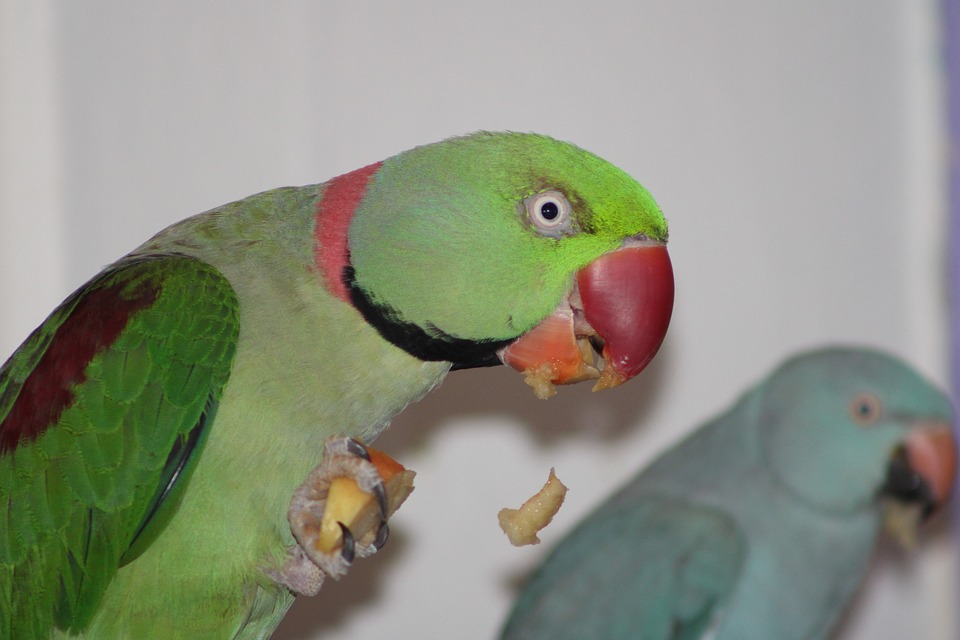Parrots are intelligent and social creatures, but sometimes they can become overly territorial, displaying aggressive behavior towards their owners or others. Excessive territorial displays can be concerning and may lead to unpleasant experiences for both parrot and owner. Fortunately, there are effective strategies to discourage parrots from exhibiting such behavior. In this article, we will explore the causes behind excessive territorial displays in parrots and provide practical tips on how to address this issue. Additionally, we will address common questions related to parrot behavior and territoriality.
Understanding Excessive Territorial Displays in Parrots
Parrots are naturally territorial animals, and in their natural habitat, they fiercely defend their nesting sites and feeding areas from intruders. However, when parrots are kept as pets, their territorial instincts can sometimes become exaggerated, leading to aggressive displays towards people or other animals. This behavior can manifest through biting, lunging, screeching, or feather fluffing.
Excessive territorial displays in parrots can have various underlying causes, including:
1. Lack of socialization: Parrots that have not been adequately socialized or exposed to different environments may perceive everything as a potential threat, triggering territorial behavior.
2. Inadequate mental stimulation: Parrots are highly intelligent creatures that require mental stimulation to prevent boredom. Without sufficient enrichment, parrots may resort to territorial displays as a way to release pent-up energy.
3. Fear or insecurity: Parrots that have experienced traumatic events or have not been properly acclimated to their surroundings may develop fear-based territorial behavior, attempting to protect themselves from perceived threats.
4. Hormonal changes: Parrots, especially during breeding seasons, may experience hormonal fluctuations that contribute to territorial behavior. This is particularly common in sexually mature parrots.
Tips to Discourage Excessive Territorial Displays
1. Proper socialization: Begin socializing your parrot from a young age by exposing them to different people, animals, and environments. Gradually introduce them to new experiences while providing positive reinforcement to encourage a calm and non-aggressive response.
2. Enrichment and mental stimulation: Keep your parrot mentally stimulated by providing a variety of toys, puzzles, and activities that promote exploration and problem-solving. Rotate toys regularly to maintain their interest and consider foraging toys to satisfy their natural instincts.
3. Establish a routine: Parrots thrive on routine, so establish a consistent daily schedule for feeding, playtime, and training. Predictability helps reduce stress and anxiety, minimizing the likelihood of territorial displays.
4. Positive reinforcement: Reward your parrot for desirable behavior, such as staying calm and non-aggressive when interacting with others. Use treats, praise, and gentle petting to reinforce positive behavior, gradually shifting their focus away from territorial displays.
5. Avoid triggers: Identify situations or objects that trigger territorial behavior in your parrot and try to minimize their exposure to these triggers. For example, if your parrot becomes territorial when people approach their cage, create a safe space where your parrot can retreat to when they feel threatened.
6. Hormonal management: If your parrot’s territorial behavior is primarily driven by hormonal changes, consult with an avian veterinarian for advice on hormonal management techniques. This may involve adjusting the lighting, diet, or environmental conditions to help regulate your parrot’s hormone levels.
FAQs (Frequently Asked Questions)
Q1: Can neutering or spaying help reduce territorial behavior in parrots?
Neutering or spaying a parrot can have positive effects on reducing hormonal-driven territorial behavior. However, it is essential to consult with an experienced avian veterinarian to discuss the potential risks and benefits associated with the procedure.
Q2: How long does it take to discourage excessive territorial displays in parrots?
The time it takes to discourage territorial behavior in parrots varies depending on the individual bird, their background, and the consistency of training and enrichment provided. It can take weeks or even months of dedicated effort to see significant improvements.
Q3: Is punishment an effective way to discourage territorial displays in parrots?
No, punishment is not recommended as a means to discourage territorial behavior in parrots. Punishment can cause fear and anxiety, potentially exacerbating the problem. Positive reinforcement and behavior modification techniques are the most effective and humane ways to address this issue.
Q4: Are there any warning signs that indicate a parrot may become territorial?
Yes, some warning signs include aggressive posturing, lunging, biting, excessive screeching, and feather fluffing. It is crucial to monitor your parrot’s behavior closely and intervene early to prevent the development of territorial displays.
By implementing these tips and understanding the root causes behind excessive territorial displays, you can help your parrot lead a happier and more harmonious life. Remember, patience, consistency, and positive reinforcement are key when working with parrots. If you find it challenging to address this behavior on your own, consider seeking guidance from a qualified avian behaviorist or veterinarian specializing in avian care.









